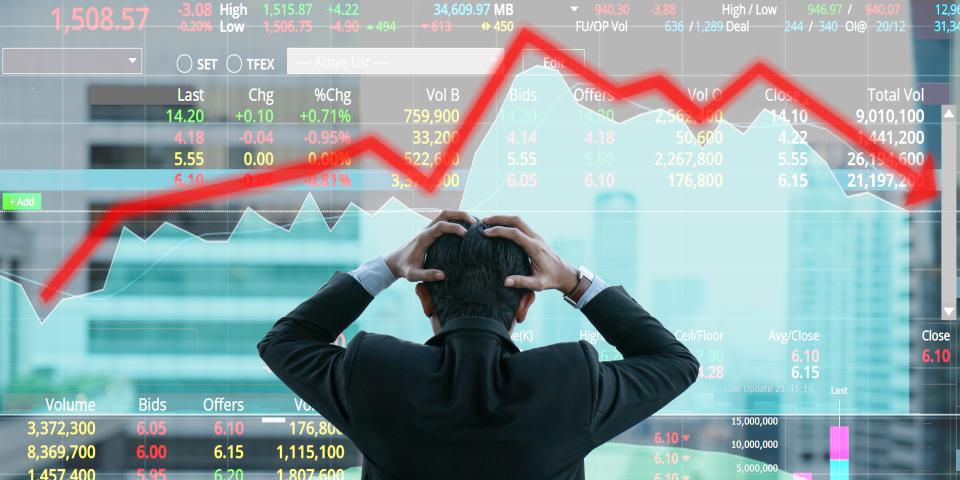3 reasons the stock market could tumble 10%, according to an increasingly nervous analyst

There are three reasons the stock market looks like it will tumble at least 10%, Peter Tchir from Academy Securities said.
Rising bond yields, sticky inflation, and a weakening US consumer have made him "increasingly nervous."
"Instead of thinking about a 5% to 10% pullback in stocks, I'm much more concerned about a 10% or higher pullback along with 10-year yields breaking through 4.5%."
One market expert is getting pretty worried about a big pullback in stocks. According to Peter Tchir, strategist at Academy Securities, US stocks are looking more and more like they could plunge by at least 10%.
"Instead of thinking about a 5% to 10% pullback in stocks, I'm much more concerned about a 10% or higher pullback along with 10-year yields breaking through 4.5%," Tchir wrote in a note on Sunday.
There are 3 reasons why he is "increasingly nervous."
First, he says, look at (1) bond yields. Yields on the 10-year Treasury have crawled up to 4.33%, and they look like they may continue to climb from here, Tchir said. In fact, the bond market could see a repeat of last fall when it suffered a historic crash.
"I've been expecting to see another march to higher yields like we saw last fall," Tchir wrote. "The 10-year yield moved higher each and every day last week – a sign of things to come?"
The last time the 10-year yield hit this level was in February, and it was followed by a rally in bonds. But the picture is changing, with the Fed looking increasingly hawkish on rate cuts. Whispers of no rate cuts — and even rate hikes — have crept onto Wall Street after inflation has proven stickier than expected.
Which takes us to Tchir's second reason: (2) inflation. To him, it's clear that inflation has remained stubbornly high. And it could remain a problem as geopolitical risks — from no end in sight to the Ukraine war, and a likely involvement of Iran in the Middle East conflict — are likely to keep energy prices high, propping up inflation.
Then there's the (3) US consumer. So far, they've been behaving like "zombies," continuously coming back to life, Tchir said. But that's about to change as they begin to buckle under the weight of rising debt and a cooling job market.
Those risks call for a "DEFCON 2 level of bearishness," he said.
"While I don't see 'stagflation as a risk,' I think we are entering a period where we could see higher yields coupled with a weakening economy and a Fed that is handcuffed by persistent inflation," he wrote. "Not a good mix."
Read the original article on Business Insider
